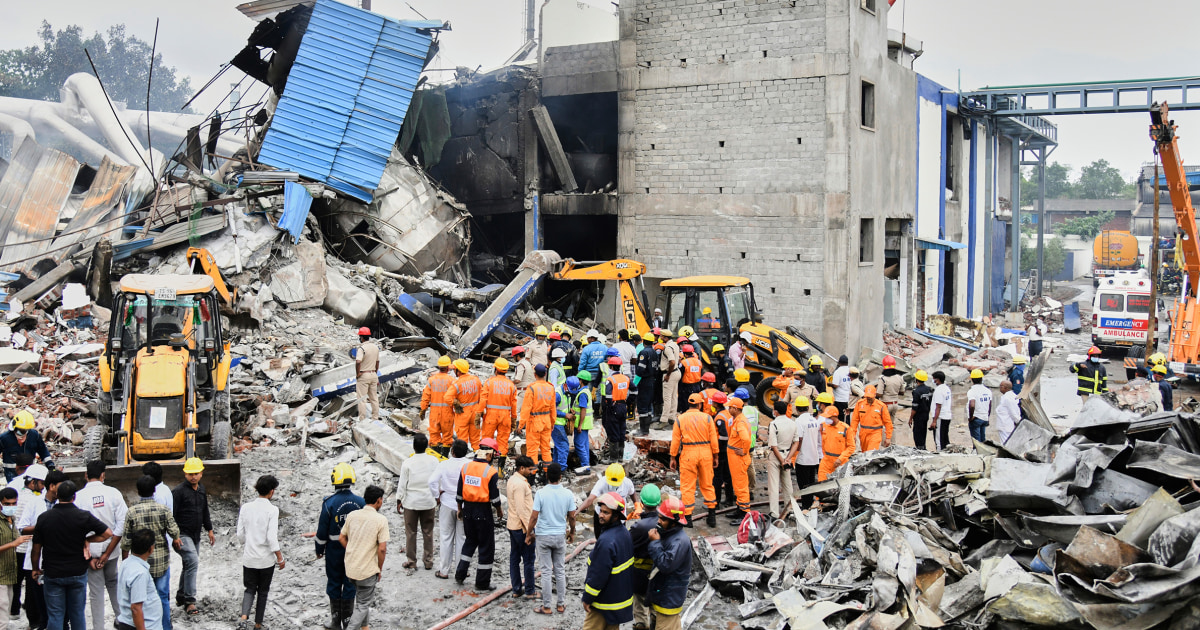Deadly Explosion at Southern India Pharmaceutical Factory Claims 36 Lives
A catastrophic explosion at a pharmaceutical factory in southern India has resulted in 36 confirmed deaths, prompting state investigations and hospitalizations for numerous injured workers.
Subscribe to unlock this story
We really don't like cutting you off, but you've reached your monthly limit. At just $5/month, subscriptions are how we keep this project going. Start your free 7-day trial today!
Get StartedHave an account? Sign in
Overview
- A deadly explosion occurred at a pharmaceutical factory in Telangana, southern India, resulting in a confirmed death toll of 36 individuals.
- The explosion happened in the spray dryer unit of the factory, with 108 workers present at the time of the incident.
- Rescue operations are ongoing, with debris being cleared to search for any remaining trapped workers.
- Injured workers have been admitted to hospitals, with some suffering severe burns; a special medical team is conducting DNA tests for identification.
- The incident has led to an 8% drop in shares of Sigachi Industries, the company operating the factory, highlighting the economic impact of the tragedy.
Report issue

Read both sides in 5 minutes each day
Analysis
Center-leaning sources present a somber and urgent tone regarding the explosion at the pharmaceutical factory, emphasizing the human toll and the need for accountability. They highlight the injuries and fatalities while framing the incident as a significant tragedy, reflecting a concern for worker safety and the implications of industrial negligence.
Articles (4)
Center (3)
FAQ
The explosion at the Sigachi Industries pharmaceutical factory in Telangana is suspected to have been caused by a chemical reaction.
There were 108 workers present at the time of the explosion, with 36 confirmed deaths and several others injured and hospitalized.
Rescue operations are ongoing with debris being cleared to search for any remaining trapped workers; identification of bodies is underway with DNA tests being conducted.
The explosion has contributed to an 8% drop in shares of Sigachi Industries, indicating significant economic impact on the company.
Survivors have sustained severe burns and head injuries; many are on ventilators, and hospitals have referred some cases to superspeciality facilities for advanced care.
History
- This story does not have any previous versions.


